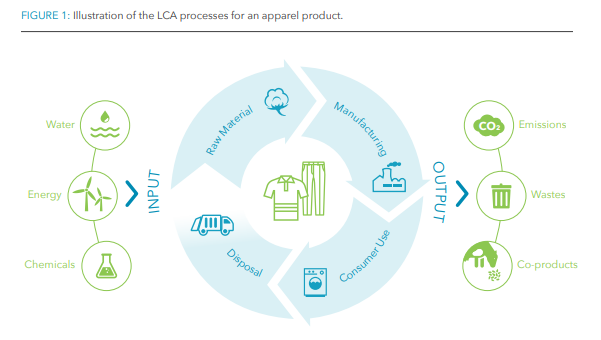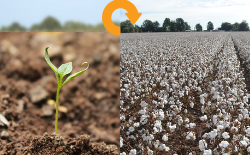As environmental sustainability continues to advance in the business world, we are all confronted with a fresh array of industry vernacular to understand. You may have run across the term, life cycle assessment, or its short form, LCA. Just what is life cycle assessment, and how is it affecting cotton?
When industries talk about life cycle assessment, they are referring to a scientific research and data analysis tool for examining the potential impacts on the environment during product’s entire life cycle. A product’s life cycle begins with the raw materials from which it’s made extending throughout the supply chain of manufacturing the product, all the way to its typical use, ending at its final disposal. Thus, LCA is basically a “cradle to grave” review of a specific product life cycle. In this discussion, we are examining the results of an LCA of cotton clothing conducted by the Cotton Foundation in 2010 and further updated in 2016.

For this particular assessment, the Cotton Foundation examined three distinct phases of the product’s life cycle: cotton fiber production, cotton textile and garment manufacturing, and consumer use and final disposal. The foundation studied fourteen different impact categories in this life cycle assessment, including global warming potential, primary energy demand, eutrophication potential, blue water consumption and use, and ozone depletion potential. The most significant impact across these categories was in the textile manufacturing and consumer use phases of the life cycle.
Cotton agriculture has most of its impact, as expected, in the consumption of water and eutrophication potential. Irrigation required in the farming process drove most of the blue water use impact, although 50 percent of the global use of water for cotton comes from rainfall. The report also noted that a global estimate of agricultural water use indicates that cotton cultivation represents only 3 percent of the water used for all agricultural crops. (Hoekstra, A.Y. & Chapagain, A.K. (2007). Water footprints of nations, water use by people as a function of their consumption pattern. Water Resource Management, (21)1, 35-48)
The eutrophication potential came primarily from the use of nitrogen fertilizer production, runoff, and leaching potential as well as nitrous oxide emissions, which impact the acidification potential.
At Barnhardt Purified Cotton, we place a high value on the data that an LCA study, such as this one from the Cotton Foundation, provides us as a means of establishing critical benchmarks, gaining a better understanding how the cotton fiber production portion of the supply chain impacts our environment, and helping us to drive our decision-making in meeting our long-term sustainability goals as a company.
The study’s findings in the agricultural phase suggest that irrigation and fertilizer use during cultivation should be optimized. We continue to work closely with associations such as the Cotton Foundation, Cotton Inc., the National Cotton Council of America, and Cotton USA, as well as directly with farmers and ginners to improve cotton production practices and advance the supply and use of responsibly produced cotton.
For a more detailed look into the Cotton Foundation’s life cycle assessment of cotton clothing, visit www.cottonleads.org/sustainable-production/life-cycle-assessment/.
